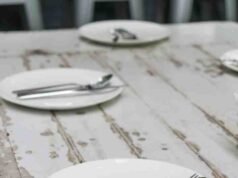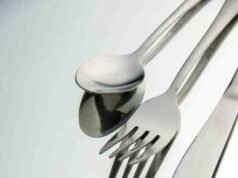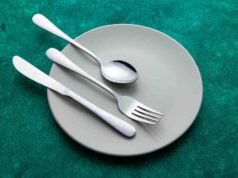One day I needed a cutlery set, and I started by browsing online shopping sites. Then I decided I wanted to see them in person. Seeing the cutlery set with my own eyes always makes me feel more comfortable. So I started visiting stores, and I came across two cutlery sets. One said “satin finish,” the other said “polished.” While their appearance wasn’t exactly the same, it wasn’t easy to tell the difference either. After talking with the salesperson and doing some research, I realized that the difference between satin and polished cutlery isn’t just about the level of shine. It’s about texture, style, ease of maintenance, and even personality.
Differences I Noticed:
☁️ Let’s start with the satin cutlery set. Satin cutlery gives a softer feeling to the touch and has a simple design in appearance. We can describe this set as elegant without being flashy.
If polished cutlery is a flashy dinner guest, satin is the elegant one quietly sipping wine in the corner. Its surface is matte-like, sometimes described as “brushed” or “soft.” It doesn’t shout. It whispers.
Appearance: Low gloss. Light diffuses evenly on the surface, giving it a calm, almost velvety look.
When you touch the set, you feel a slight roughness. It’s like finely sanded metal not exactly rough, but you feel a gentle resistance.
Pros:
- Satin cutlery hides fingerprints much better than polished. This means you won’t have to constantly grab a cloth to wipe off smudges—a big advantage.
- It gives a more modern look. If you have a Scandinavian-style kitchen, you’ll find a perfect match.
- One of the most important features of satin cutlery is that scratches are much less noticeable.
Cons:
- If shine is a must for you, satin cutlery may feel too matte.
- If you’re going for a more affordable set, I recommend reading the product details carefully. If poorly made, the surface may look uneven over time.
✨ Polished Cutlery: Shine Bright… Like Stainless Steel
Polished cutlery is the classic mirror finish type. Think of restaurant cutlery or the special set your grandmother brought out on holidays. If shine is important to you, this is the product to get.
Its ultra-glossy design can feel like you’re looking into a mirror. You can literally see your face in the spoon.
When you touch it, it feels smooth and slick. I recommend keeping your hands dry—if they’re wet, the cutlery can almost slip right out.
Pros:
- Elegant and eye-catching with its high gloss.
- Perfect for those who want a timeless, traditional style.
- Looks great on dark tablecloths or rustic wood.
Cons:
- Every fingerprint, scratch, and water spot? Unfortunately, they all show.
- It needs to be wiped frequently to maintain its shine.
🍴 Which One Should You Choose?
Here’s the thing—neither is “better.” It all depends on your style, patience, and how much you like wiping silverware.
If you want something low-maintenance, modern, and subtle, go for satin.
If you love sparkle and don’t mind the upkeep, polished is for you.
One more tip: lighting matters. Satin looks soft in natural light. Polished sparkles under warm bulbs. Weird but true.
One more warning: don’t mix them in the same table setting. It’s like wearing sneakers with a suit—it can work, but it usually doesn’t.
| Feature | Satin | Polished |
|---|---|---|
| Finish Look | Soft, matte, modern | Glossy, reflective, formal |
| Fingerprint Resistant | Yes | Not really |
| Scratch Visibility | Low | High |
| Style Vibe | Minimal, contemporary | Classic, elegant |
| Maintenance | Easy | High |
So yeah, next time you’re eyeing silverware online, give it a second look. That tiny word satin vs polished can totally change your table’s personality.
read more: Do Satin Silverware Sets Show Water Spots?













[…] already covered in detail what satin silverware is and which budget-friendly sets might be worth considering. I can confidently say we’ve created […]